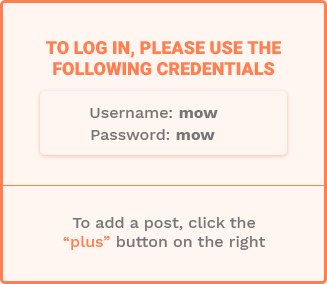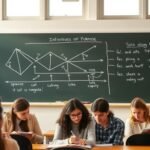Now Reading: Speed Reading vs. Deep Reading: Which One Do You Need?
-
01
Speed Reading vs. Deep Reading: Which One Do You Need?
Speed Reading vs. Deep Reading: Which One Do You Need?

Speed Reading vs. Deep Reading: Which One Do You Need?
In today’s fast-paced world, the ability to process information efficiently is crucial. With the average person consuming over 100,000 words per day, effective reading strategies are more important than ever.

The debate between speed reading and deep reading has gained significant attention, as individuals seek to optimize their reading habits for different goals. While speed reading enables quick consumption of large amounts of information, deep reading allows for a more profound understanding and retention of complex material.
Understanding the differences between these two approaches is essential to choosing the right reading technique for your needs.
Key Takeaways
- Effective reading is crucial in today’s information age.
- Speed reading and deep reading serve different purposes.
- Choosing the right reading technique depends on your goals.
- Understanding your reading needs is essential.
- Different reading strategies can be applied for various tasks.
Understanding the Reading Spectrum
The reading spectrum encompasses a range of techniques, from speed reading to deep reading. Understanding these different approaches is crucial for effective literacy development and improving reading speed and comprehension techniques.
Defining Speed Reading and Deep Reading
Speed reading involves quickly processing written information with the goal of grasping the main ideas or key points. Deep reading, on the other hand, is a more immersive and engaging process that involves a deeper understanding and interpretation of the material.
Key Characteristics of Each Approach
Speed reading is characterized by rapid eye movements and a focus on extracting essential information. In contrast, deep reading involves slower, more deliberate reading, often with a focus on analysis and reflection. Effective readers can adapt their approach based on the material and their goals.
The Science Behind Different Reading Approaches
Research into how our brains process text at different speeds has shed light on the cognitive processes involved in reading. Understanding these processes can help readers optimize their approach.
How Our Brain Processes Text at Different Speeds
When reading at high speeds, our brains rely on pattern recognition and contextual clues to fill in gaps in understanding. In contrast, deeper reading engages more complex cognitive processes, including analysis and critical thinking. By understanding these differences, readers can tailor their approach to their goals and the material.
The Mechanics of Speed Reading
In an era dominated by information overload, mastering the mechanics of speed reading can be a game-changer. As individuals seek to improve reading efficiency, understanding the core techniques and dispelling common misconceptions becomes essential.
Core Techniques of Speed Reading
Speed reading is not just about reading quickly; it’s about employing strategies that enhance reading speed while maintaining comprehension. Two fundamental techniques are skimming and scanning.
Skimming and Scanning Methods
Skimming involves quickly glancing over headings, subheadings, and bullet points to grasp the main ideas. Scanning, on the other hand, is about looking for specific information within a text. Both techniques are crucial for improving reading efficiency by focusing on the most relevant information.
Chunking Text for Faster Processing
Another effective technique is chunking, which involves grouping words together to process information in larger units. This method can significantly enhance reading speed by reducing the number of eye movements needed to read a text.
Common Misconceptions About Speed Reading
One common misconception is that speed reading involves sacrificing comprehension for speed. However, effective speed reading techniques are designed to maintain or even improve comprehension while increasing reading speed.
Realistic Expectations for Reading Speed Improvement
It’s also important to have realistic expectations when it comes to improving reading speed. While some individuals may naturally read faster than others, consistent practice with fluency exercises can lead to significant improvements over time.
By understanding and applying these core techniques and dispelling misconceptions, individuals can make informed decisions about their reading strategies and achieve their reading goals more effectively.
The Art of Deep Reading
Deep reading involves a complex set of cognitive processes that foster critical thinking. This approach to reading is not just about understanding the text but also about analyzing, reflecting, and making connections between different pieces of information.
What Makes Reading “Deep”
Deep reading is characterized by a profound engagement with the material, going beyond mere comprehension to involve critical analysis and reflection. Analytical reading involves breaking down the text into its constituent parts to understand its structure and meaning, while reflective reading involves making connections between the text and one’s own experiences or other texts.
Analytical and Reflective Reading Processes
Analytical reading requires readers to identify the main arguments, recognize the author’s tone and purpose, and understand the underlying assumptions. Reflective reading, on the other hand, involves considering the implications of the text, relating it to one’s own knowledge or experiences, and evaluating its relevance and significance.
Cognitive Processes in Deep Reading
Deep reading engages several cognitive processes, including attention, memory, and inference. Readers need to focus their attention on the text, remember key points, and make inferences to fill in gaps or understand implicit meanings.
The Connection Between Deep Reading and Critical Thinking
Deep reading is closely linked to critical thinking, as it involves evaluating the arguments presented, identifying biases, and considering multiple perspectives. Critical thinking enables readers to move beyond a superficial understanding of the text and develop a nuanced and informed view.
How Deep Reading Enhances Comprehension and Retention
By engaging deeply with the material, readers can improve their comprehension and retention of the information. Deep reading helps to create a richer understanding of the text, making it easier to recall and apply the knowledge in different contexts.
When to Use Speed Reading
Speed reading is not a one-size-fits-all solution; it’s essential to understand when to apply it for maximum benefit. The technique can be particularly useful in certain contexts, making it a valuable skill for individuals looking to improve their reading efficiency.
Ideal Content Types for Speed Reading
Certain types of content are more suited to speed reading than others. For instance, news articles and reports often contain information that can be quickly scanned without losing comprehension.
News Articles, Reports, and Informational Texts
News articles typically follow a structured format, with key information presented at the beginning. This makes it easier for readers to quickly grasp the main points. Similarly, reports and informational texts can be efficiently processed using speed reading techniques, allowing readers to cover more material in less time.
Situations That Benefit From Rapid Information Processing
There are several situations where rapid information processing is beneficial. In academic and professional settings, being able to quickly process large volumes of information can be a significant advantage.
Academic and Professional Applications
In academia, students often have to read extensively for research papers and exams. Speed reading can help them cover the necessary material more efficiently. Professionals, too, can benefit from speed reading when dealing with large reports, emails, or industry publications, enabling them to stay informed and make decisions more quickly.

Setting Appropriate Goals for Speed Reading Sessions
To get the most out of speed reading, it’s crucial to set appropriate goals. This involves understanding what you want to achieve and adjusting your reading strategy accordingly. As
“The more you read, the more you know, and the more you can achieve.”
, setting the right goals can significantly enhance your reading outcomes.
By identifying the purpose of your reading session, you can tailor your approach to meet your needs, whether it’s to gain a general overview or to extract specific information.
When Deep Reading Is Essential
Deep reading is a crucial skill that enables readers to fully comprehend complex texts, analyze nuanced information, and develop a deeper understanding of the material. In this section, we will explore the contexts in which deep reading is essential, including literary works, complex texts, and technical material.
Content That Demands Deeper Engagement
Literary works, complex texts, and technical material often require a higher level of engagement and comprehension. These types of content demand that readers slow down, analyze the information, and make connections between different ideas.
Literary Works, Complex Texts, and Technical Material
Literary works, such as novels and poetry, often require deep reading skills. Complex texts, including academic papers, technical writing, and dense informational content, require readers to engage in deep reading. Technical material, such as instructional guides, user manuals, and technical specifications, demands a high level of comprehension and attention to detail.
The Role of Deep Reading in Learning Complex Concepts
Deep reading plays a vital role in learning complex concepts by enabling readers to develop a deeper understanding of the material. Through deep reading, readers can analyze complex information, identify key concepts, and understand the relationships between different ideas.
Creating Optimal Conditions for Deep Reading
To facilitate deep reading, it is essential to create an optimal reading environment. This includes a quiet, comfortable, and distraction-free environment, adequate lighting, seating, and minimal distractions. A receptive and open-minded attitude is crucial for deep reading, and readers should be willing to engage with complex ideas and challenging content.
Developing Reading Skills: Step-by-Step Approaches
The ability to read effectively is a skill that can be developed over time with dedication. To achieve this, it’s essential to understand the different techniques and strategies that can enhance reading skills.
Progressive Training Methods for Speed Reading
Speed reading can be improved through systematic training. One effective method involves practicing with material of increasing difficulty to build reading stamina.
Daily Exercises to Increase Reading Speed
Daily exercises such as timed reading sessions can help increase reading speed. For instance, setting a timer for 10 minutes and reading as much material as possible during that time can be an effective exercise.
Tracking Progress and Overcoming Plateaus
Tracking progress is crucial to identify areas that need improvement. Using tools or apps to monitor reading speed and comprehension can help overcome plateaus by adjusting the training regimen accordingly.
Exercises to Enhance Deep Reading Capabilities
Deep reading involves more than just understanding the text; it requires critical engagement and analysis. Techniques such as active reading and annotation can significantly enhance deep reading capabilities.
Annotation and Active Reading Strategies
Annotation involves highlighting important points and making notes in the margins. Active reading strategies include summarizing the content in one’s own words and questioning the material to engage more deeply.
Common Mistakes and How to Correct Them
One common mistake in reading is prioritizing speed over comprehension. To correct this, it’s essential to strike a balance between reading quickly and understanding the material.
Balancing Speed with Comprehension
Balancing speed with comprehension involves adjusting reading techniques based on the material’s complexity and the reader’s goals. For simpler texts, speed can be prioritized, while more complex texts may require a slower, more deliberate approach.
By incorporating these strategies and being mindful of common pitfalls, readers can develop a robust set of reading skills tailored to their needs.
Balancing Speed and Comprehension
Finding the optimal balance between reading speed and comprehension is crucial for effective reading. Readers need to be able to quickly grasp the main ideas while maintaining a good understanding of the material.
Finding Your Personal Reading Sweet Spot
To achieve this balance, it’s essential to identify your personal reading sweet spot. This involves understanding your reading goals, the type of material you’re reading, and your individual reading style.
Self-Assessment Techniques
Several self-assessment techniques can help you determine your reading sweet spot. One approach is to reflect on your reading habits and the types of materials you typically read. Consider keeping a reading journal to track your progress and identify areas for improvement.
Techniques for Maintaining Comprehension at Higher Speeds
To maintain comprehension while reading at higher speeds, several techniques can be employed. These include using headings, summaries, and key phrases to facilitate quicker comprehension, as well as practicing active reading strategies such as identifying the main ideas, recognizing supporting details, and making inferences.
Adjusting Your Approach Based on Reading Goals
Adjusting your reading approach based on your goals is vital. If your goal is to quickly grasp the main ideas, you may focus on speed reading techniques. However, if your goal is to deeply understand complex material, you may need to slow down and employ deep reading strategies.
Creating a Decision Framework for Reading Approaches
Developing a decision framework for choosing the appropriate reading approach involves considering several factors, including your reading goals, the complexity of the material, and your personal reading style. By weighing these factors, you can make informed decisions about when to emphasize speed and when to focus on comprehension.
Digital Reading: Special Considerations for Modern Readers
The shift from traditional print to digital reading has introduced new challenges and opportunities for readers. As we navigate this change, understanding the nuances of digital reading is crucial for effective literacy development and advanced reading skills.
How Screen Reading Differs from Print
Reading on digital screens differs significantly from reading print materials. The backlight of screens, the potential for distractions, and the variability in text display all impact the reading experience. Research has shown that readers tend to skim more and engage less deeply with digital content compared to print. This difference necessitates a reevaluation of reading strategies to optimize comprehension and retention.
Adapting Speed and Deep Reading Techniques for Digital Content
To effectively read digital content, it’s essential to adapt both speed reading and deep reading techniques. For speed reading, utilizing features like text highlighting and adjustable font sizes can enhance reading efficiency. For deep reading, minimizing digital distractions is key. Tools and apps designed to support different reading styles can play a significant role in this adaptation.
Tools and Apps That Support Different Reading Styles
Several tools and apps are available to support various reading needs. For instance, apps that allow for font adjustment, brightness control, and distraction-free modes can facilitate both speed and deep reading. Readability apps, such as Spreeder and Readability, offer features like customizable reading speeds and layouts that reduce eye strain.
Managing Digital Distractions During Reading
Managing digital distractions is critical for maintaining focus during reading. Strategies include turning off notifications, using website blockers, and dedicating specific times for reading.
“The ability to concentrate is a skill that can be developed with practice, and it’s crucial for deep reading in a digital age.”
Practical Strategies for Focused Digital Reading
- Set specific reading goals and times.
- Use apps that help minimize distractions.
- Practice active reading techniques, such as summarizing content.

Conclusion: Creating Your Personalized Reading Strategy
Effective reading is a skill that can be developed by understanding when to employ speed reading and when to engage in deep reading. By recognizing the purpose of the material and the desired outcome, readers can tailor their approach to achieve their goals.
To improve reading skills, it’s essential to be flexible and adapt to different reading situations. Whether the goal is to quickly scan a news article or thoroughly comprehend a complex text, choosing the right technique is crucial. By doing so, readers can enhance their literacy and make the most of their reading time.
Ultimately, a personalized reading strategy involves being aware of one’s reading objectives and selecting the most suitable methods to achieve them. By combining speed reading and deep reading techniques, readers can optimize their reading experience and improve their overall reading skills.
FAQ
What are the main differences between speed reading and deep reading?
Speed reading focuses on quickly processing large amounts of information, often using techniques like skimming and scanning, while deep reading involves a more thorough and analytical approach to understanding complex texts.
How can I improve my reading speed without sacrificing comprehension?
To improve reading speed while maintaining comprehension, practice techniques like chunking, meta-guiding, and active reading, and regularly assess your progress to adjust your approach as needed.
What types of content are best suited for speed reading?
Speed reading is often ideal for news articles, reports, and informational texts where the goal is to quickly grasp the main ideas, whereas complex or technical material may require a deeper reading approach.
How can I enhance my deep reading capabilities?
To enhance deep reading capabilities, practice active reading strategies like annotation, summarizing, and questioning, and create an optimal reading environment that fosters focus and comprehension.
What are some common mistakes to avoid when practicing speed reading?
Common mistakes to avoid when practicing speed reading include sacrificing comprehension for speed, failing to adjust reading approach based on content type, and not tracking progress to identify areas for improvement.
How can I balance speed and comprehension in my reading?
To balance speed and comprehension, regularly assess your reading goals and adjust your approach accordingly, using techniques like self-assessment and decision frameworks to optimize your reading strategy.
What role does literacy development play in improving reading skills?
Literacy development plays a crucial role in improving reading skills, as it involves enhancing reading fluency, vocabulary, and comprehension, allowing readers to effectively apply different reading techniques.
How can I adapt my reading approach for digital content?
To adapt your reading approach for digital content, consider using tools and apps that support different reading styles, managing digital distractions, and adjusting your reading techniques to accommodate the unique characteristics of screen reading.
What are some effective fluency exercises for improving reading skills?
Effective fluency exercises for improving reading skills include timed reading, reading aloud, and repeated reading, which can help increase reading speed, accuracy, and overall reading proficiency.
How can I develop advanced reading skills?
To develop advanced reading skills, practice complex reading tasks, such as analyzing and interpreting nuanced texts, and engage in activities that promote critical thinking and comprehension, like annotation and discussion.






























